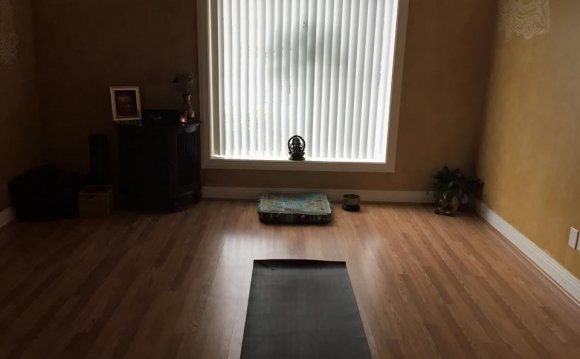
- Determine the effectiveness of TSY compared to CPT-C in reducing PTSD symptoms, chronic pain, and insomnia [ Time Frame: 3 years ]
Participants in the TSY group will show statistically and clinically meaningful reductions in PTSD symptoms, chronic pain and insomnia (PTSD Checklist-5 (PCL-5) scores, Clinician Administered PTSD Scale (CAPS) scores, Pain Outcomes Questionnaire (POQ) scores, Pittsburgh Sleep Quality Index (PSQI) scores) compared to CPT-C group results following treatment.
- To evaluate the effectiveness of TSY as compared to CPT-C in improving quality of life and social functioning in women Veterans with PTSD related to MST. [ Time Frame: 3 years ]
Participants in the TSY group will show statistically and clinically meaningful improvements in quality of life and social functioning (PROMIS measures) compared to CPT-C group results.
- To evaluate the effectiveness of TSY as compared to CPT-C on biological stress response and psychophysiological hyper-responsivity. [ Time Frame: 3 years ]
Participants in the TSY group will show statistically and clinically meaningful changes in biological stress response (inflammatory cytokines, C-reactive protein levels) and psychophysiological hyper-responsivity (dark-enhanced startle measures and heart rate variability).
- PTSD Checklist-5 (PCL-5) [ Time Frame: Baseline; Mid-Treatment; 2-Weeks Post-Treatment; 3-Months Post-Treatment ]
- PROMIS v2.0 Ability to Participate in Social Roles and Activities - Short Form 4a [ Time Frame: Baseline; Mid-Treatment; 2-Weeks Post-Treatment; 3-Months Post-Treatment ]
- PROMIS v2.0 Social Isolation - Short Form 4a [ Time Frame: Baseline; Mid-Treatment; 2-Weeks Post-Treatment; 3-Months Post-Treatment ]
- PROMIS v2.0 Satisfaction with Social Roles and Activities - Short Form 4a [ Time Frame: Baseline; Mid-Treatment; 2-Weeks Post-Treatment; 3-Months Post-Treatment ]
- PROMIS v2.0 Emotional Support - Short Form 4a [ Time Frame: Baseline; Mid-Treatment; 2-Weeks Post-Treatment; 3-Months Post-Treatment ]
- Interleukin-6 (IL-6) levels from plasma [ Time Frame: Baseline; 2-Weeks Post-Treatment; 3-Months Post-Treatment ]
- Interleukin-10 (IL-10) levels from plasma [ Time Frame: Baseline; 2-Weeks Post-Treatment; 3-Months Post-Treatment ]
- C-Reactive Protein (CRP) levels from plasma [ Time Frame: Baseline; 2-Weeks Post-Treatment; 3-Months Post-Treatment ]
- Dark-Enhanced Startle Response [ Time Frame: Baseline; 2-Weeks Post-Treatment; 3-Months Post-Treatment ]
- Heart Rate Variability [ Time Frame: Baseline; 2-Weeks Post-Treatment; 3-Months Post-Treatment ]
- Dark-Enhanced Startle Response [ Time Frame: Change from Baseline to 2-Weeks Post-Treatment and 3-Months Post-Treatment ]
- Heart Rate Variability [ Time Frame: Change from Baseline to 2-Weeks Post-Treatment and 3-Months Post-Treatment ]
Objectives: The overall goal of this project is to maximize the health, social functioning, and quality of life of women Veterans with posttraumatic stress disorder (PTSD) who have experienced military sexual trauma (MST). The specific aims of this randomized controlled trial (RCT) are to evaluate the effectiveness of a trauma-sensitive yoga intervention designed specifically for women who experienced sexual trauma as compared to a gold-standard PTSD treatment, Cognitive Processing Therapy-Cognitive, to 1) treat PTSD and its co-morbid symptoms of chronic pain and insomnia, 2) improve social functioning and quality of life, and 3) reduce the biological and psychophysiologic responses associated with PTSD in women Veterans who experienced MST.
Research Plan: This proposed four year RCT is the next step following the NRI Pilot Study (NRI 12-417) in which the investigators demonstrated the feasibility of recruitment, retention, randomization, intervention implementation, and data collection, including biological and psychophysiological data. Women Veterans seeking treatment for PTSD who report chronic pain and insomnia will be recruited from the Atlanta VAMC Trauma Recovery Program Women's Trauma Program. Participants (n=210) will be randomly assigned to trauma-sensitive yoga (10 weekly sessions) or Cognitive Processing Therapy-Cognitive (12 weekly sessions); both intervention protocols are data-driven. The target enrollment sample size is 210, with a target final sample of 100 or more. The investigators are conservatively allowing for 50%-60% retention, based on pilot study results.
Methods: Data Collection: Data will be collected at four points, baseline through 3-months post-intervention. The investigators will include self-report, clinical assessments and biologic and psychophysiologic markers as outcome measures. Specific outcomes include PTSD symptom severity, chronic pain, insomnia, social functioning, quality of life, cytokines (IL-6, IL-10), C-reactive protein, dark-enhanced startle, and heart rate variability. Data Analysis: Comparisons between the groups at baseline will be run using t-tests, Mann Whitney non-parametric tests, and chi-square tests as appropriate. Multilevel mixed models (MLM) will be used to analyze the differences between the groups over time. MLM adjusts for attrition (missing data) over time and applies appropriate correlation structure between the time points.
Clinical Relevance: Women Veterans experience MST and PTSD at alarming rates; consistently reported prevalence rates for both among VHA patient samples are 20% or more. MST and PTSD put this population at risk for significant physical and mental health symptoms, including chronic pain, suicide, and negative health behaviors. This RCT may provide sufficient evidence to support an innovative, complementary and alternative PTSD treatment for women Veterans who experienced MST. The positive effects of reducing distressing symptoms and PTSD-related psychophysiological stress would likely improve social functioning and quality of life and minimize the significant medical consequences of PTSD in this population. This new, evidence-based PTSD treatment could supplement existing evidence-based PTSD treatment modalities. Clinical guidelines for this innovative intervention based on evidence from this clinical trial could be disseminated to and implemented in VA Medical Centers nationwide.









